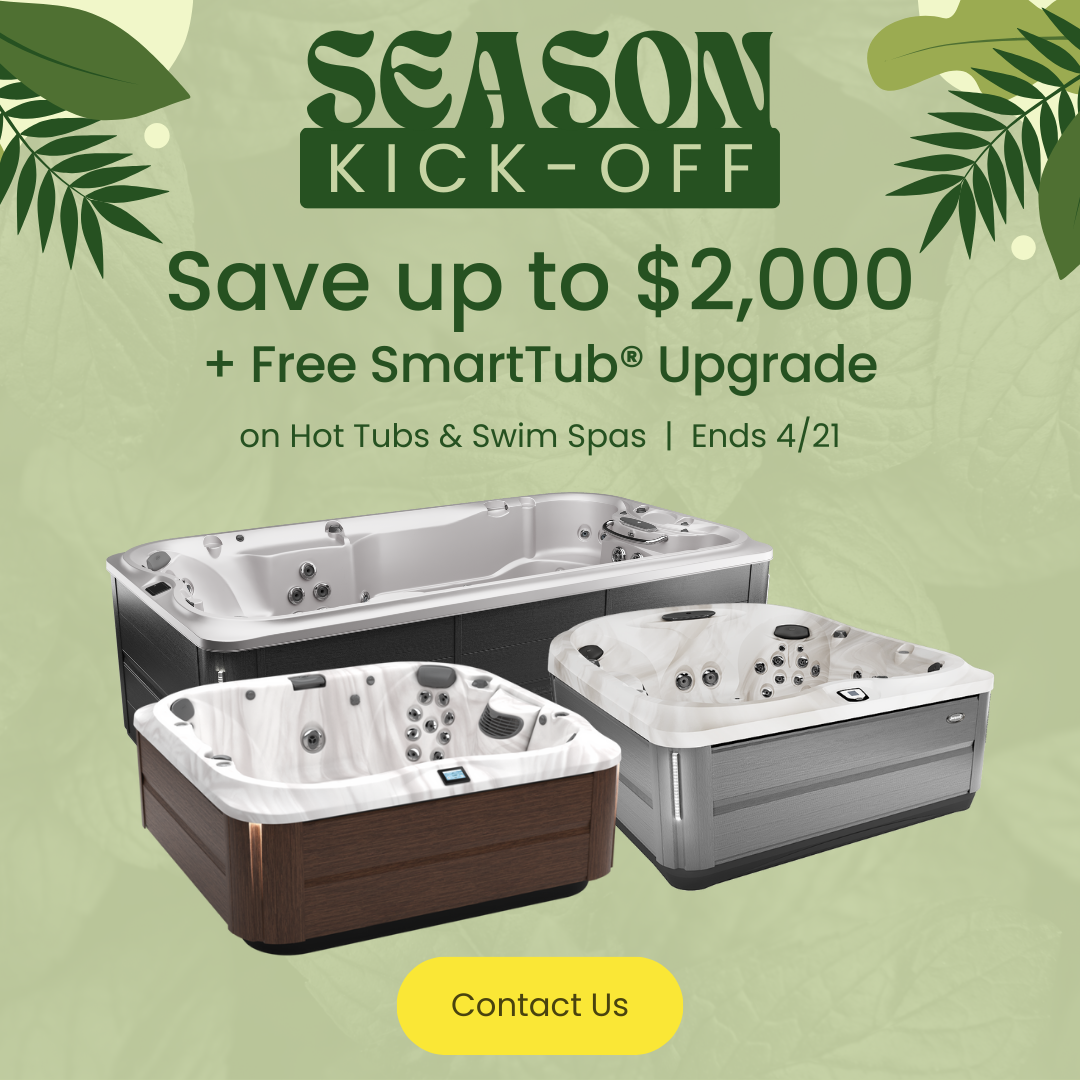Hot tubs offer a welcoming escape from the world.
Providing a soothing warmth and powerful hydromassage, it’s no wonder they’ve become a coveted backyard staple.
Keeping your hot tub water safe to soak in is a vital aspect of owning a spa, and this all comes down to your hot tub chemicals.
Whether you’re a seasoned owner or are eagerly awaiting the delivery of your new hot tub and want to learn how to care for your water like a pro, you’ve come to the right place.
In this guide, we’re going to cover everything you need to know about treating your water.
You’ll learn about the top essential hot tub chemicals, some optional ones to consider, and discover some important steps to follow when adding them to your water.
Read on to become a hot tub chemical master!
Why Are Hot Tub Chemicals Important?
Just like a pool, the water in your hot tub has to be properly balanced to provide a safe soaking experience.
Over time, bodies of water, like pools or hot tubs, develop bacteria, which can be harmful to be in for extended times if left unmanaged.
Not only is poorly balanced water unsafe to be in, but it can cause damage to your hot tubs systems and shell over time.
Your hot tub chemicals work together to keep your water clean, clear, and healthy, providing a safe environment and reducing the risk of damage throughout your system.
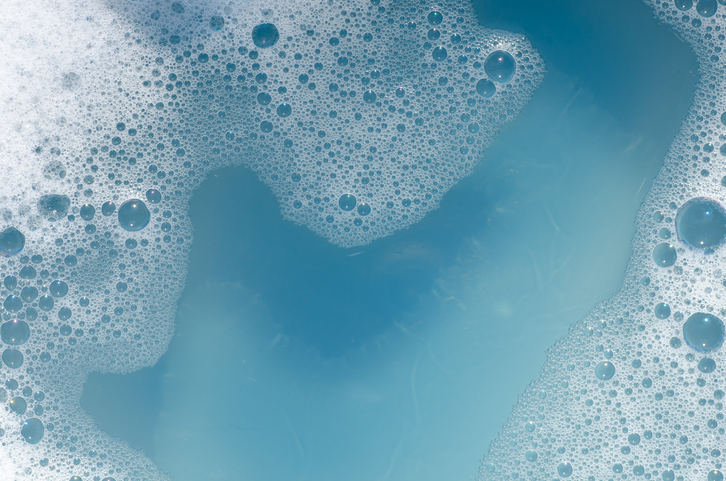
Common Signs of Poorly Treated Water
The water in your hot tub will quickly begin communicating with you through various warning signs if it’s not properly treated.
There are three main warning signs of poorly treated water:
- A cloudy or murky appearance
- Foam on the surface
- Algae blooms floating in the water
If you’ve lifted your hot tub cover and noticed your water doesn’t look right, the first thing you’ll want to do is test it to see what levels are off and know which chemicals you need to add.
While you may think you’d simply need to add chlorine to clear up dirty water, some of these issues, such as a murky appearance, can occur from a pH imbalance and not low sanitizer levels.
Testing your water is vital to knowing how to treat it properly.
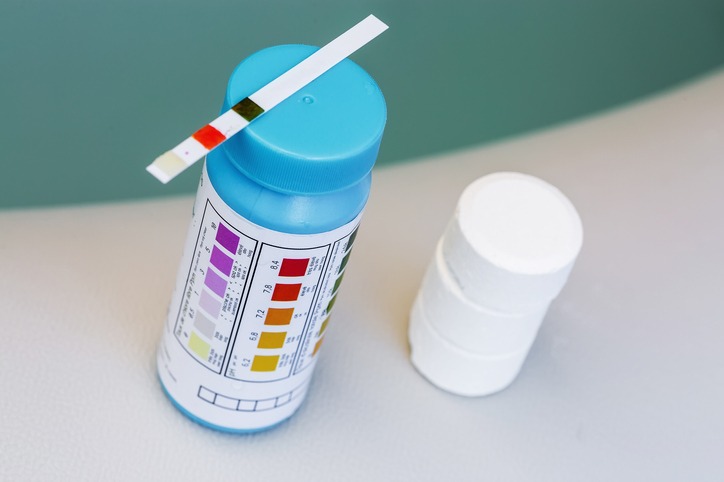
4 Essential Hot Tub Chemicals
Hot tub chemicals come in many different forms, and not all of them may be needed to treat your water.
The quality of your local water supply will play a significant role in which chemicals you’ll use, and how much of each one will be needed to balance your water after a water change.
However, there are four hot tub chemicals that every hot tub owner will need, regardless of their location.
1. pH and Alkalinity Treatments
All water has a pH and alkalinity level, and when it comes to hot tubs, this has to be particularly balanced to ensure your water remains safe and non-damaging to your system.
pH and alkalinity simply refer to how hard or soft your water is.
If you’ve ever noticed mineral deposits on your faucets, it’s likely you have hard water.
Imagine how the pipes of your hot tub would look after a few years if it were exposed to that untreated water…this is certainly not ideal!
This is why it’s so important to balance the pH and alkalinity levels of your hot tub water.
When balanced, you drastically reduce the risk of your water damaging the various parts of your hot tub through scale buildup or corrosion.
The pH of your hot tub water should always remain between 7.2 and 7.8, while your alkalinity should be between 80 and 120 ppm.
To keep your water balanced, you’ll need to use three chemicals:
- pH increaser
- pH decreaser
- Total alkalinity increaser
After testing your water, you’ll need to bring your alkalinity levels within range before treating your pH.
This is because alkalinity has a larger influence over pH levels than pH does on alkalinity, so treating it first will make it easier to balance your water.
Unfortunately, there is no chemical to specifically reduce alkalinity levels.
If you discover your alkalinity is above 120 ppm, you’ll need to use your pH decreaser to adjust it, then use your pH increaser to bring your pH level back to its expected range.
2. Sanitizer
Your sanitizer works to combat the bacteria in your water, keeping it safe to be in.
There are three main types of sanitizer you can use, each with its own pros and cons:
- Chlorine
- Bromine
- Biguanide
Chlorine
Chlorine is easily the most well-known sanitizer and is the most popular option for both hot tub and pool owners.
Not only is chlorine the most affordable option, but it is also incredibly effective, quickly breaking down bacteria in your water.
Unfortunately, because it’s so fast acting, you may need to treat your water more frequently than with other options.
Chlorine levels in a hot tub should remain between 1 and 3 ppm.
Bromine
If you’re looking for a softer sanitizer, bromine is a great option.
Bromine is less harsh than chlorine, and it works over a longer period of time, reducing the frequency of treatments.
However, bromine is more expensive than chlorine, and it breaks down quicker in the sun, so it’s important to reduce your water’s exposure to the sun if this is the sanitizer you’re using.
Bromine levels in a hot tub should be kept between 3 and 5 ppm.
Biguanide
For a non-chlorinated option, biguanide will be your go-to.
This sanitizer creates a silky smooth soaking experience and is completely odorless, making it a desirable option for many.
While it’s just as effective as its chlorinated counterparts listed above, it is easily the most expensive of the three options, so it’s most commonly used for those with chlorine sensitivities.
Biguanide levels in a hot tub should be between 30 and 50 ppm.
3. Shock
While your sanitizer works to break down bacteria day-to-day, a shock treatment serves as a super-sanitizer to support its effectiveness.
Ideally, you should be adding shock to your hot tub at least once a week, but it’s always beneficial to use after increased use, such as following a hot tub party.
Shock can come in various forms, and which one you use will depend on your sanitizer.
One of the most popular options is a non-chlorinated oxidizing shock, which works to break down the oils in your water that your sanitizer is unable to combat.
4. Filter Cleaner
While filter cleaner isn’t a chemical you add directly to your hot tub, it is a vital aspect of keeping your water clean.
Your filters play a significant role in your water’s cleanliness, so it’s important to take proper care of them.
This includes routinely cleaning them.
Once a month, you should be spraying your filters with a filter cleaner, allowing them to soak for 15 minutes before rinsing them off and returning them to your spa.
This will help your filters maintain their efficiency and keep your water crystal clear.
Optional Hot Tub Chemicals
As mentioned above, there are some hot tub chemicals that are optional and may only be needed depending on your local water quality.
Calcium Hardness Increaser
If you live somewhere with softer water, you may need to use a calcium hardness increaser.
This can make it easier for you to balance your water after a water change by increasing the mineral content.
Clarifier
If you’ve discovered your hot tub has foam on the surface, but you don’t have time to diagnose the issue right away, you can use a hot tub clarifier to temporarily clear up your water.
This chemical isn’t a long-term solution and is simply a short-term fix until you have time to properly diagnose and manage the underlying cause.
Ideally, this should only be used if you need a quick fix, not as a continuous solution to unrelenting foam.
Tips When Adding Chemicals to Your Hot Tub
How you add the chemicals to your water is just as important as which ones you use.
Without adding them properly, you risk improperly treating your water, spending more money on chemicals than necessary, or overtreating your water and having to change it!
Here are some basic tips to ensure you’re adding your chemicals safely and effectively.
1. Keep The Cover Open
As your chemicals mix into your water, they produce gas that rises from the surface of your water.
Keeping your cover open for 20 minutes after you’ve added your chemicals will help ensure these gasses are able to evaporate properly.
If your cover is left on, these gasses will be pushed back into your water and result in higher chemical levels than you had planned.
2. Follow The Directions Closely
Each one of your chemicals will come with directions on how to safely use it.
Before adding any chemicals to your water, read and follow these directions carefully to ensure you’re using the product how it was intended to be used.
3. Measure Twice Before Adding
While it’s easy to add more chemicals to your water, it’s impossible to remove them once they’re in.
If you add too much, you’ll either need to wait for the chemical levels to drop over a few days or drain your hot tub and start over.
To avoid this mistake, always measure your chemicals twice, ensuring you’re only adding exactly what is required and no more.
4. Keep Your Jets Running
Lastly, to ensure your chemicals are evenly distributed throughout your hot tub, you’ll need to keep your jets running while you add them.
Hot Tub Chemicals in Chelan
At Swim World, we stock a wide range of hot tub chemicals to help ensure your hot tub water is always crystal clear and ready to enjoy.
Our experts can help walk you through your various options and provide guidance on optional products that may help you maintain your water more easily based on your local water quality.
Contact us today, or visit us in-store, and we’ll be happy to help you find everything you need to master your hot tub water.

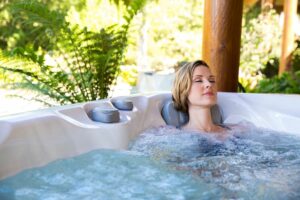

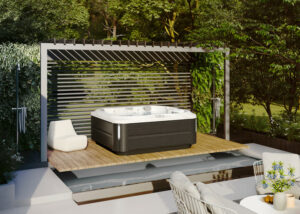
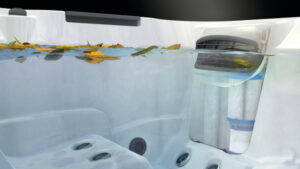
 by
by 